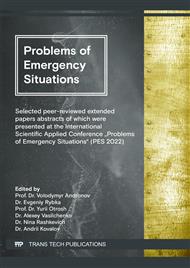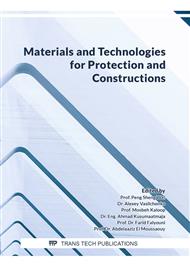p.159
p.169
p.175
p.183
p.191
p.199
p.206
p.216
p.224
Results of Experimental Investigations of Reinforced Concrete Wall Elements According to the Standard Temperature Mode of Fire
Abstract:
Methods for determining the actual limit of fire resistance of reinforced concrete building structures in case of fire are analyzed. On the basis of the offered methods the technique which gives the chance to receive data of temperature distributions on a surface of a fragment of a wall and in its section is created. The method of conducting a fire test to calculate the limit of fire resistance of a small fragment of the load-bearing wall and verify the reproducibility of experimental data is described. The distribution of temperatures over the entire area of the fire furnace, the studied fragment was checked and the obtained results were analyzed. According to the results of this work, the following was established: the aim of the work was to obtain the results of temperature distributions on the surface, in the points of integration in the cross sections of fragments of reinforced concrete walls for further calculation of their fire resistance limit and check reproducibility of experimental data. It is established that the temperature obtained as a result of the fire test corresponds to the standard temperature of the fire and this method of fire test to determine the temperature distributions of a small fragment of the load-bearing wall in fire conditions is acceptable for use. The error between the experimentally determined and theoretically calculated limit of fire resistance is not more than 3%.
Info:
Periodical:
Pages:
206-215
Citation:
Online since:
July 2022
Authors:
Price:
Сopyright:
© 2022 Trans Tech Publications Ltd. All Rights Reserved
Share:
Citation:



